Selected References:
- Antonucci R, et al. 2018. Maternal carbamazepine therapy and unusual adverse effects in a breastfed infant. Breastfeed Med 13(2):155-157.
- Baker GA, et al. 2015. IQ at 6 years after in utero exposure to antiepileptic drugs: a controlled cohort study. Neurology 84(4):382-90.
- Bech BH, et al. 2014. Use of antiepileptic drugs during pregnancy and risk of spontaneous abortion and stillbirth: population based cohort study. BMJ 349:g5159
- Blotiere PO. et al. 2020. Risk of early neurodevelopmental outcomes associated with prenatal exposure to the antiepileptic drugs most commonly used during pregnancy: a French nationwide population-based cohort study. BMJ Open. 7;10(6):e034829.
- Campbell E, et al. 2014. Malformation risks of antiepileptic drug monotherapies in pregnancy: updated results from the UK and Ireland Epilepsy and Pregnancy Registers. J Neurol Neurosurg Psychiatry Sep;85(9):1029-34.
- Canger R, et al. 1999. Malformations in offspring of women with epilepsy: a prospective study. Epilepsia 40(9):1231-1236.
- Davanzo R, et al. 2013. Italian Journal of Pediatrics 39:50-61.
- Deshmukh U, et al. 2016. Behavioral outcomes in children exposed prenatally to lamotrigine, valproate, or carbamazepine. Neurotoxicol Teratol 54:5-14.
- Fried S, et al. 2004. Malformation rates in children of women with untreated epilepsy: a meta-analysis. Drug Saf 27(3):197-202.
- Gaily E, et al. 2004. Normal intelligence in children with prenatal exposure to carbamazepine. Neurology 62:28-32.
- Gladstone DJ, et al. 1992. Course of pregnancy and fetal outcome following maternal exposure to carbamazepine and phenytoin: a prospective study. Reprod Toxicol 6:257-61.
- Harden CL. 2008. Antiepileptic drug teratogenesis: what are the risks for congenital malformations and adverse cognitive outcomes? Int Rev Neurobiol 83:205-13.
- Hernandez-Diaz S, et al. 2000. Folic acid antagonists during pregnancy and the risk of birth defects. N Engl J Med 343(22):1608-1614.
- Huber-Mollema Y. et al. 2020. Neurocognition after prenatal levetiracetam, lamotrigine, carbamazepine, or valproate exposure. J Neurol. 267(6):1724-1736.
- Husebye E. et al. 2020. Language impairment in children aged 5 and 8 years after antiepileptic drug exposure in tuero – the Norwegian Mother and Child Cohort Study. European Journal of Neurology 27.3:667-675.
- Jones KL, et al. 1989. Patterns of malformations in the children treated with carbamazepine during pregnancy. N Engl J Med 320(25):1661-66.
- Kallen AJB. 1994. Maternal carbamazepine and infant spina bifida. Reprod Toxicol 8(3):203-205.
- Meador KJ, et al. 2009. Cognitive function at 3 years of age after fetal exposure to antiepileptic drugs. N Engl J Med 360(16):1597-1605.
- Margulis A. et al. 2019. Relation of in-utero exposure to antiepileptic drugs to pregnancy during and size at birth. PLoS One. Aug; 5;14(8):e0214180.
- Meador KJ, et al. 2014. Breastfeeding in children of women taking antiepileptic drugs cognitive outcomes at age 6 years. JAMA Pediatr Aug;168(8):729-36.
- Morrell M. 1996. The new antiepileptic drugs and women: efficacy, reproductive health, pregnancy and fetal outcome. Epilepsia 37(Suppl. 6):S34-S44.
- Nulman I, et al. 1997. Findings in children exposed in utero to phenytoin and carbamazepine monotherapy: independent effects of epilepsy and medications. Am J Med Genet 68:18-24.
- O’Brien MD and Gilmour-White SK. 2005. Management of epilepsy in women treated with carbamazepine during pregnancy. Postgrad Med J 81(955):278-285.
- Ornoy A and Cohen E. Outcome of children born to epileptic mothers treated with carbamazepine during pregnancy. Arc Dis Child 75:517-20
- Patel N, et al. 2018. Mood-stabilizing anticonvulsants, spina bifida, and folate supplementation: commentary. J Clin Psychopharmacol 38(1):7-10.
- Rosa FW. 1991. Spina bifida in infants of women treated with carbamazepine during pregnancy. N Engl J Med 324(10)674-677.
- Samren EB, et al. 1999. Antiepileptic drug regimens and major congenital abnormalities in the offspring. Ann Neurol 46(5):739-746.
- Scolnik D, et al. 1994. Neurodevelopment if children exposed in utero to phenytoin and carbamazepine monotherapy. JAMA 271(10):767-770.
- Tomson T and Barrino D. Teratogenic effects of antiepileptic drugs. Seizure 17(2):166-171.
- Tomson T and Klein P. 2015. Fine-tuning risk assessment with antiepileptic drug use in pregnancy. Neurology. 84(4):339-40.
- Tomson T, et al. 2015. Antiepileptic drugs and intrauterine death: A prospective observational study from EURAP. Neurology Aug 18;85(7):580-8.
- Tomson T, et al. 2018. Comparative risk of major congenital malformations with eight different antiepileptic drugs: a prospective cohort study of the EURAP registry. Lancet Neurol 17(6):530-8.
- Vajda F. 2014. Epilepsy: Effects of exposure to antiepileptic drugs during development. Nat Rev Neurol.10:11-2.
- Vajda F, et al. 2018. Anti-epileptic drug exposure and risk of foetal death in utero. Acta Neurol Scand Jan;137(1):20-23.
- Wallace H, et al. 1998. Age-specific incidence and prevalence rates of treated epilepsy in an unselected population of 2,052,922 and age-specific fertility rates of women with epilepsy. Lancet 352:1970-73.
- Weston J, et al. 2016. Monotherapy treatment of epilepsy in pregnancy: congenital malformation outcomes in the child. Cochrane Database Syst Rev.11:Cd010224.
- Wide K, et al. 2000. Psychomotor development and minor anomalies in children exposed to antiepileptic drugs in utero: a prospective population-based study. Dev Med Child Neurol 42:87-92.
- Wiggs K. et al. 2020. Anti-seizure medication use during pregnancy and risk of ASD and ADHD in children. Neurology. [Published online ahead of print October 27, 2020] Aoki FY, et al. 2013. The use of antiviral drugs for influenza: A foundation document for practitioners. Can J Infect Dis Med Microbiol. 24(Suppl C) :1-15.

